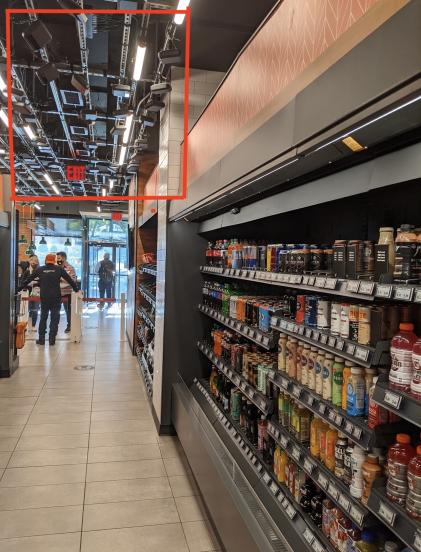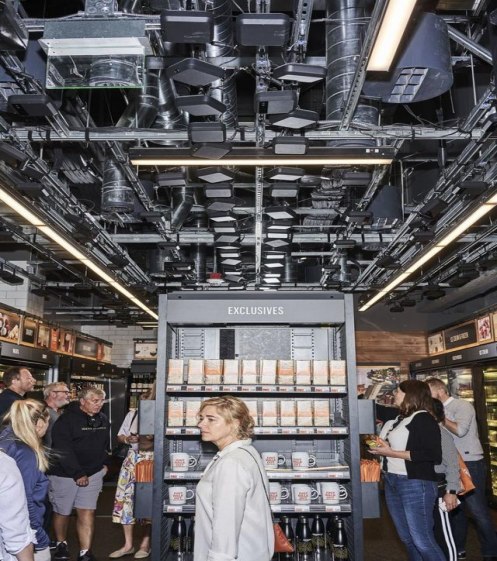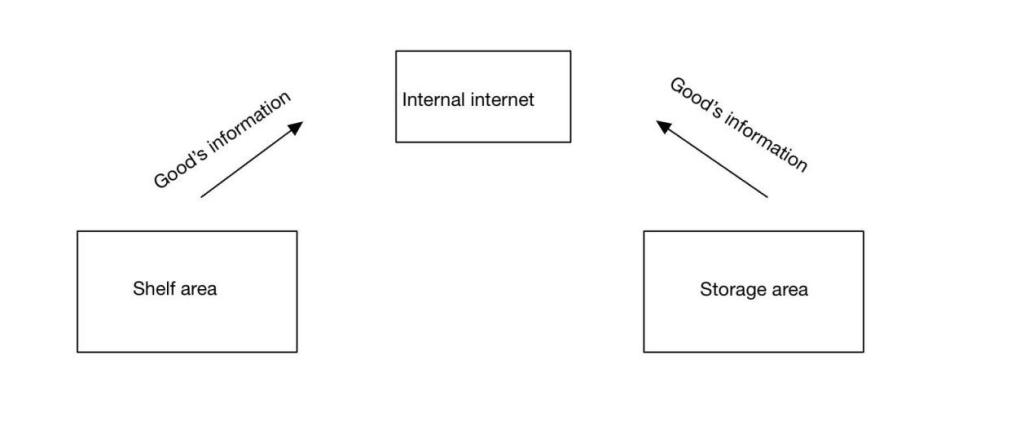1. Introduction
The present age is the age of the Internet, and everyone can't live without it. Throughout the fifty years of Internet development, the value it has created for the world is immeasurable and ongoing.
Fang summarized that digital technology is in the stage of intelligent IoT stage. Remote surgery, unmanned delivery, driverless, etc., and driverless products rely on IoT and artificial intelligence. And cloud computing is the core of the IoT. In 2022, the American journal Forbes predicted five trends in cloud computing in 2023, including artificial intelligence to power cloud computing technology [1].
As the trading market continues to grow, the massive amount of data it generates and the complexity of the market make more and more companies realize the role of cloud computing and artificial intelligence in fueling the development of the market. Its significance for the trading market is transformative.
In 2015, AI-led a number of companies to achieve breakthroughs, with Apple's market value increasing 180 times, Google's market value once surpassing Apple's due to the emergence of Alphabet and AlphaGo, and the emergence of bicycle sharing on the Chinese Internet, etc. Amazon's revenue growth in 2015 was only 13.2% higher than the average total retail sales in North America compared to Amazon's data in previous years. Amazon's revenue growth has significantly decreased [2].
Amazon is North America's number one online retailer, but nearly 90 percent of U.S. retail revenue is from offline retail. Amazon changed its strategy in 2015, when its revenue was little compared to previous years, and started to enter other industries when it entered offline retail, such as developing and selling smartphones, Fire phone, establishing film studios, etc.
This article will focus on two aspects, the current state of AI and cloud computing and how Amazon.Go relies on AI and cloud technologies to analyze the current and potential impact of AI and cloud computing on Amazon.Go.
2. Cloud Computing and Artificial Intelligence
2.1. Cloud Computing Technology Overview
2.1.1. Background of Cloud Computing
Cloud computing is a computer technology that reduces costs to provide services through the Internet. As early as 1961, in the MIT Centennial Lecture, John McCarthy mentioned that "computers will be the basis of a new and important industry". Eric Schmidt first introduced the "cloud computing" concept in 2006 at the Search Strategy Engine strategy session. Cloud computing has been widely used in various markets in recent years, and according to Hua Jing industry statistics in 2022, the global cloud computing market size is up to $310.5 billion. According to the scale data from 2018 to 2022, Hua Jing predicts that the cloud computing market scale will continue to expand.
2.1.2. Classification of Cloud Computing
Cloud computing is divided into public, private, and hybrid. The public cloud is an architecture where resources are shared, and users can search for resources according to their own needs [3]. The private cloud is only for internal users. It can be built on the company's LAN to facilitate all internal system information for easy management. For example, Amazon.Go builds its own internal data center system structure. At the same time, Amazon also set up Amazon. Web serves all the information and data of other enterprises within this system. But the cost is also extremely high.
Hybrid cloud is an integrated architecture of public and private clouds. Enterprises have their own internal servers to ensure information security also to achieve access to more resources in the public cloud [4]. However, the hybrid cloud now still has the problem of potential data migration. For example, 12306, on the one hand, has its own data center, i.e., private cloud, to provide ticketing queries and other services. When the volume of users is large, part of the query function is used to provide services with Ali cloud, i.e., Ali cloud.
2.2. Overview of Artificial Intelligence Technology
2.2.1. Principle of Artificial Intelligence
Artificial intelligence is a computer technology that simulates learning or even replaces certain human behaviors through computer software and hardware. Artificial intelligence now includes areas such as image recognition, language processing, and so on. The operating principle of artificial intelligence is basically the same as the operating principle of human behavior. For example, image recognition is done through computer hardware devices, the camera, which is the "human eye" and computer software technology, and image processing, which is the "human brain" [5].
2.2.2. Current Status of Artificial Intelligence
In recent years, artificial intelligence (AI) has been developing rapidly and gradually penetrating the business sector. According to Economist's assessment, AI-related mergers and acquisitions were 26 times higher in 2017 than in 2015 [6]. For example, according to the AI Index, from 2010 to 2017, the error rate for image recognition dropped from 29% to less than 3%, exceeding human performance. Examples include Amazon. Go-uncashiered retail store, chatbot Alexa, and virtual assistant, Siri.
3. Artificial Intelligence and Cloud Computing in Amazon.Go
3.1. The Process of Combination of AI and Cloud Computing
3.1.1. Conception Stage
In 2012, the "artificial intelligence" craze emerged, which led to the birth of AlphaGo and the significant growth of Google's market capitalization. After discussion, Amazon Tech used AI technology to launch a different convenience store. The envisioned store relies on a combination of AI and cloud computing and sensors to automatically identify products without adding codes [7].
In the research and development process, Amazon abandoned RFID, a relatively mature program. RFID program is, each commodity has an RFID tag; when the user with the goods out of the store, it will automatically sense the chip in the RFID tag and automatic settlement. But the cost incurred is huge when RFID tags are applied to each item.
Another option is to rely on the customer to scan the product before paying. Customers can hold a portable scanner and scan as they go to the self-checkout machine to pay when they are done shopping. But some stores, such as Tesco, already use this method of shopping. And relying on customers to scan the code is not in line with Amazon's original idea of reducing the burden of customers.
3.1.2. R&D Stage
The AI and cloud computing solution seems simple but difficult in the actual development process. Most of Amazon's internal computational vision talent was recruited to work at Amazon to study how AI and cloud computing could be applied in convenience stores.Go as a program. The average work time was 85 hours. But the original design of a 30,000-square-foot convenience store was still too idealistic, and after three months of experimentation, the number of square feet was reduced to 15,000.
In 2016, Amazon announced the launch of "Amazon.Go," a new unmanned shopping experience with "no lines, no checkout, just shop. Go" and rented a property in Seattle's Capitol Mall to open a store for Amazon's internal trial.
However, the trial operation did not go very smoothly. After continuous research and experimentation, the team found that it was impossible to guarantee customer behavior analysis by relying on computer vision. So, on the basis of the original, the team added a pressure-sensing device on the shelf with a camera to identify the specific person. Later on, it was found that when there were more than 20 people in the store, the system could not track the products, and the team decided to reduce the store size to control the number of customers.
After lengthy experiments and improvements, the first Amazon.Go opened to the public in 2018.
3.2. Specific Use of AI and Cloud Computing in Amazon.Go
3.2.1. Shopping Area
Amazon.Go's promotion mentions the shopping process for customers. Before entering the store, you download and register the Amazon shopping application on your cell phone and apply to enter the store and receive a QR code, which you scan with the gate at the store entrance. After entering the store, you will select the products you want to buy. After shopping, you can leave the store without checking out. Such a seemingly convenient and simple shopping process A patent filed by Amazon Technologies in 2015, "Detecting item interaction and movement" [8]. explains in graphic detail how to track the location of items to target people who pick them up. There are many references to scenarios in goods storage, and supermarkets cannot be separated from the support of cloud computing and artificial intelligence behind.

Figure 1: Detecting item interaction and movement (Source: https://patents.google.com/patent/US20150019391A1/en).
The above figure1 shows the details of how to track items in supermarkets and how to transfer the information to the mobile app. The patent involves two major technology combinations, cloud computing - private cloud - Saas and artificial intelligence. Image information is collected through the use of information-gathering devices. The information is analyzed in real-time and stored in Amazon's own internal cloud. It is mentioned in the patent that imaging devices (208: cameras, sensors, detectors, etc.) capture images of customers (204) and give them to computing processors (203) for processing. In the illustration, computing resource 203 can process one or more from 203 (1) to 203 (p). 203 confirms if the object leaves or returns to the shelf location. If the object leaves the shelf position, it will automatically transfer the product data to the program registered by the customer's phone before entering the store, thus enabling automatic addition to the mobile shopping cart. When the customer leaves, the app will automatically settle the bill and deduct the money.
However, using existing AI technology does not accurately identify the purpose of not judging each customer's action. Due to the light and darkness of the light, the different placement of goods on the shelves can make the camera not achieve the desired goal. So, Amazon. Go, team added the pressure sensing device to the merchandising. The product's weight on the shelf is used to determine whether the consumer has taken the product, and then the camera identifies the specific portrait of the person and then transmits it to the system.
Go physical store environment (such as Figure 2 and 3 sources Google map) has a large number of cameras and sensors ready.

Figure 2: The picture shot in Goods shelves’ area in Amazon.Go’s Store (Source: Google map).

Figure 3: The picture shot in the Amazon.Go’s Enter area (Source: Google map).
3.2.2. Storage Area
When the pressure sensing device with the camera transmits the taken goods to the intranet, the computational processing system determines that the goods are taken. At the same time, the intranet in the warehouse area receives the information that the goods have been taken away and transmits it to the mobile device in the hands of the storekeeper in the warehouse. The clerk receives the information and restocks the shelves, as shown in Figure 4.

Figure 4: Product information transfer map from shelf area to storage area (Source: Researched and collected by this article).
4. The Problems and Innovations in Amazon.Go
4.1. The Limitations, High Cost & Less Customer Loyalty in Amazon.Go
In terms of "unmanned checkout", this gives Amazon.Go a strong competitive advantage in the current near-perfect convenience store operation. It is more convenient for customers and brings some traffic to Amazon.Go. In terms of staffing costs, the cost of cashier staff is removed, and the cost of warehouse staff and shelf staff is cut. It also reduces the work pressure on store staff, who do not need to check the shelves and warehouse goods individually, they only need to check the mobile device in their hands to confirm the out-of-stock shelves.
The use of AI and cloud computing in Amazon.Go has been very mature, but Amazon.Go is not a success as a shopping store. The main reason is that Amazon.Go’s turnover is not enough to support Amazon.Go's high construction and operation costs. Since 2016, Amazon.Go has been in a loss-making situation. Amazon.Go has an average daily traffic of 550 people and an annual turnover of about $10,000 [9], which is not profitable in the long or short term.
Compared to retail stores such as Tesco, Walmart, etc. Amazon.Go saves on cashier costs by removing AI and Amazon and increasing checkout speed, directly increasing revenue. However, compared to Tesco, and Walmart, Amazon.Go has less variety of products and customers’ loyalty. The main reason why customers choose to shop at Amazon.Go is the shopping method of Amazon.Go is new, and within six months after the launch of Amazon.Go, many customers lost their interest in shopping at Amazon.Go.
4.2. The New Developments in Amazon.Go
However, Amazon.Go has also been undergoing renovation and upgrading both in internal operating and external business. For internal adjusting, Amazon has been developing its own fruit distributors to interface with fruit farmers to establish Amazon directly. Fresh since 2018. Amazon.Fresh provides Amazon.go lower costs in fruit suppliers compared to traditional retailers.
For the external business, lots of companies are interested in the patent of the Amazon.Go. They begin to Corporate with Amazon.Go in stores. Amazon.Go rapidly appears in people’s daily life, and this causes people rapidly rely on the style the Amazon.Go is. Amazon.Go has been working with Starbucks and other Amazon.Go has partnered with several food brands, including Starbucks, to offer checkout-less shopping in these offline stores.
4.3. Optimization Strategy
4.3.1. Cost Discounts in Purchasing and Renting Machine and Systems
For the failure of the Amazon.Go, high cost and the less customer loyalty are the main reasons.
The main costs are the initial research and development cost, the cost of renting the cloud system, and the cost of the sensor machine. All these costs are fixed and cannot be avoided or saved. The best approach is to negotiate with the suppliers of the cloud system and the sensor machine to earn the discount. The high demand of the sensors machine is an essential point that can be earn discounts [10]. The Cloud systems’ supplier is the Amazon self-company, Amazon Tech. There’s the opportunity for the Amazon.Go to apply the discounts.
4.3.2. Get the Customer Loyalty
Amazon.Go has no the competitive-advantage except the “unmanned checkout”, because the whole operation from supply, store to sell in other retailers is mature. The long history of retail has made the details of the operating retail factory perfect even specifying in the type of decoration, the color intensity of light, and the Goods in shelves’ location can make the customer comfortable to attract and keep the customers.
Amazon.Go has enough advertisements, most people only know Amazon.Go’s shopping style but have not experienced it—the best way for Amazon.Go to earn the customer’s loyalty is to make the customer suit and habit shopping in Amazon.Go. By cooperating with popular companies like Starbucks and Costco, people suit this type of shopping and begin to depend on it. When people have accepted the more convenient shopping style, it’s hard for them to shop in the traditional way, waiting for check-out [11].
Different stores have different features. For example, the fruits in The M&S are the best for the customers And the meat in the Waitrose is the best for the customer. Amazon.Go can also focus on the specific type of Goods to develop itself to catch customers' attention.
Obviously, now the operation of Amazon.Go is more suit for developing a store like seven eleven, which save the people’s daily life emergency, not the size like Tesco, which is for a high amount of goods for people to purchase. Amazon.Go can develop step by step when earning enough customer’s loyalty and expand the size.
4.3.3. Gradually own Full Self-supply System
Additionally, the point the Amazon.Go can have a minimum competitive advantage that, unlike the other retailers by purchasing in whole Goods’ supply, Amazon.Go partly depended on itself. On the one hand, The Amazon Company, by purchasing Whole Foods Company to achieve the supply goods costs loser for the Amazon.Go. Conversely, the Amazon expand its food supply business although it spends more money. Amazon.Go can keep this approach and gradually major depend on itself.
5. Conclusion
5.1. Findings
Amazon.Go is so innovative that many other companies are starting to follow suit with similar operations, such as Alibaba. But Amazon.Go is unsuccessful in the retail industry, and it will take a long time to experiment and adapt. The high cost of development and operation is not a problem that can be solved. This type of store is only can be developed by the top listed rich and highly technical companies, the small company cannot afford the bills.
However, Amazon.Go's operating model has the potential to grow from unmanned checkouts to suppliers to business partnerships. This is a process that will allow Amazon.Go to expand into new areas of business.
5.2. Limitations
Amazon.Go is the only store operating by AI and cloud computing in the world, and its size is not big, there’s only four stores in the world, so the financial statement not be published detailed. This research paper didn’t specifically use actual data compared with the same type of competitive companies in the earnings.



